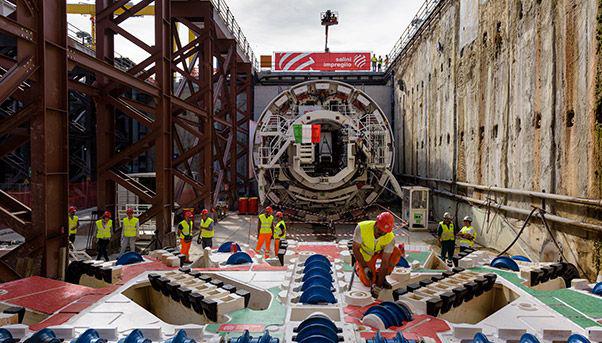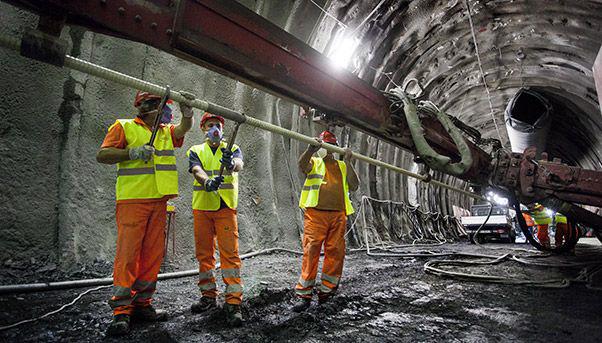
To understand the importance of the Terzo Valico dei Giovi high-speed rail link, one must travel from Genoa to Novi Ligure in the mind’s eye.
The line is strategic for Italy’s economy because it will connect the Ligurian coast with the industrial regions of Piedmont and Lombardy.
The Genoa-Turin-Milan triangle will see people and goods travel at 250 kilometres per hour, giving a much-needed boost to trade with the rest of Europe.
At a cost of €6 billion, the rail link will run for 53 kilometres, 37 of which through tunnels.
Travel times will be drastically shortened: 30 minutes between Milan and Genoa rather than one hour and 40 minutes.
About the Terzo Valico
The Terzo Valico is seen by the European Union as one of the main projects behind the Trans-European Transport Network (TEN-T) that will connect high-speed rail lines across the continent. It will be part of the Rhine-Alps corridor, linking Genoa with Rotterdam. In other words, the Mediterranean with the North Sea. The project with also have four interconnections with existing rail lines. Each of them will be 24 kilometers long and located in the towns of Voltri, Genova Parco Campasso, Novi Ligure and Tortona.
COCIV, the consortium responsible for its construction led by Salini Impregilo, is grafting the high-speed rail link onto existing lines running from the port of Genoa to Turin and Milan and on to northern Europe such as Antwerp and Rotterdam.

The impact
Even though it was envisioned 27 years ago, the purpose of the project has not changed: to create a high-speed rail link between Genoa’s port and Piedmont, Lombardy and Veneto – the three main regions of northern Italy responsible for the movement of 50% of the country’s goods and 45% of the gross domestic product. If the port of Genoa’s logistical potential were to be exploited to the maximum the economic impact could be even greater.
The port of Genoa has an operating surface of seven million square meters, 27,000 square metres of docks, 4.2 million passengers that transit each year and 1.7 million cruise-goers, and moves containers measuring 2.6 million TEU (twenty-foot equivalent unit) each year and 69 million tonnes of freight. These numbers confirm the logistical importance of this maritime facility which would be significantly enhanced if it were to gain a high-speed connection along which its cargo could travel.
Completing a new railway link that connects Genoa with northern Europe would enable Genoa’s port to intercept some of the traffic flows from Asia that currently favour the North Sea routes instead of the Mediterranean even though reaching northern Europe requires five days more of navigation. Guaranteeing an efficient rail link with the rest of Europe would transform Genoa’s port into a new continental hub, reducing the amount of truck traffic across the Apennines that creates four or five times the amount of air pollution than rail.
An opportunity to create jobs
Like all other large complex infrastructure projects, the Terzo Valico dei Giovi is a significant opportunity to create new jobs.
According to figures on the official website (www.terzovalico.it), employment by COCIV and its related contractors can reach a peak of 2,500 people who are working on or near the site. And the number is higher when considering the auxiliary activities.
Most of the staff are experts in tunnelling, which is not surprising given that most of the rail line runs underground. This substantial number is destined to double when the railway is up and running.
The potential for more job creation is robust, as is the impact that this infrastructure will have on the city of Genoa. The tragic collapse of the Morandi Bridge in the city – along with causing the loss of 43 lives and the relocation of more than 600 residents – has also caused huge economic damage which has cost the port alone an estimated €2.2 billion.
Making up for this damage is the key challenge for the coming years. A challenge that can be met if the city is supported by a new and modern infrastructure, capable of shortening the distance between northern Italy and the rest of Europe.

